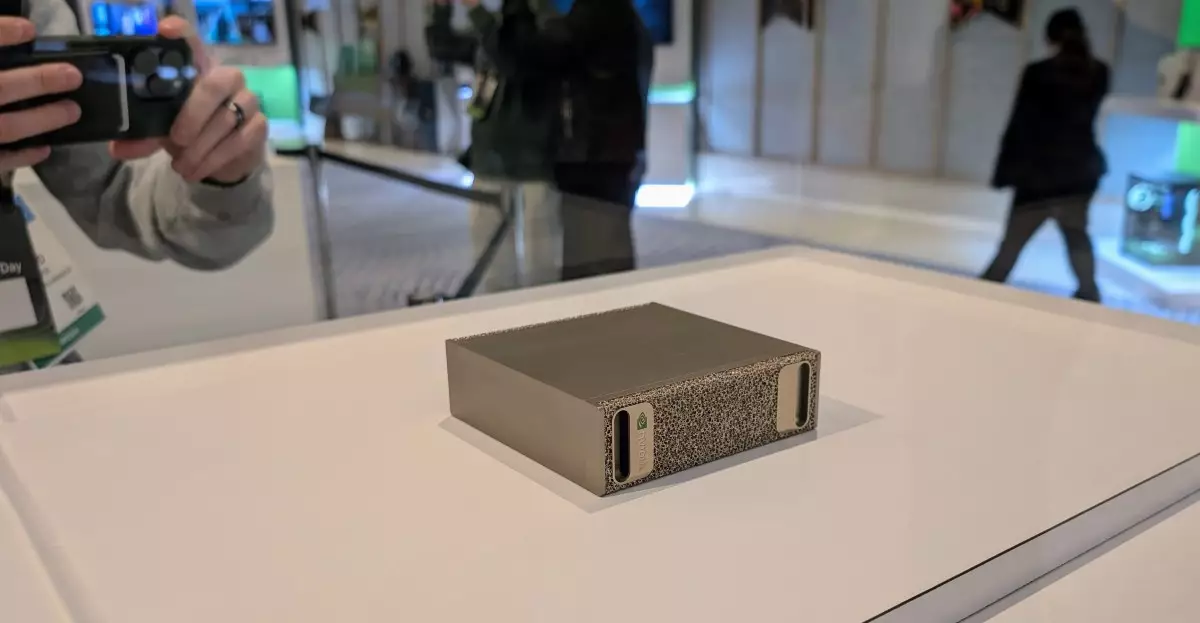In an era characterized by rapid advancements in technology, the race to harness artificial intelligence has reached an exciting new plateau. Companies like Asus, Dell, and HP are not merely participants in this race; they are redefining the boundaries of what computing power can achieve. The latest contributor to this wave of innovation is Nvidia’s Grace Blackwell platform, a hardware architecture poised to facilitate the development of mini AI supercomputers. These enterprises are showcasing ambitious designs that underscore not only their commitment to advanced technology but also their intent to make such power accessible for a broader swath of users.
Nvidia’s announcement of the Grace Blackwell initiative emphasizes its role as a facilitator in the burgeoning ecosystem of AI computing. By allowing third-party manufacturers to harness its technology, Nvidia opens the door for innovation that might have otherwise been stunted by proprietary restrictions. This collaborative approach turns traditional hardware development on its head, fostering creativity among established brands keen to capture a stake in the growing AI market.
Miniaturization Without Compromise
The mini-PCs being unveiled by manufacturers echo a powerful message: size does not equate to diminished capability. For instance, Asus has introduced the Ascent GX10, a compact unit boasting an impressive 1,000 AI TOPS processing power and 128 GB of unified memory—specifications that challenge conventional expectations for machines of this size. Dressed in a more approachable white plastic casing that diverges from the sleek metallic designs typically associated with high-end tech, Asus’s GX10 is designed for versatility and consumer appeal.
What stands out about these emerging designs is their duality; they are both consumer-friendly and equipped for high-performance tasks. HP’s ZGX Nano AI Station G1n embodies a premium feel with its sleek workstation aesthetics, suggesting professionalism and capability that aligns well with enterprise needs. These innovations illustrate a key trend: as computing power becomes more sophisticated, the designs are evolving to balance performance with aesthetics suitable for various environments—from corporate offices to home-based workspaces.
Dell’s Bold Steps in AI Integration
When it comes to the competitive landscape of mini supercomputers, Dell is making its presence felt with the introduction of the “Dell Pro Max With GB10.” While its design is stark and simple, the underlying promise of advanced capabilities remains robust. Dell’s strategy appears to blend functionality with a minimalist aesthetic—a black box with a power button—signifying a shift in how AI systems can integrate seamlessly into existing infrastructures like server racks.
Furthermore, it is notable that Dell is already advancing bigger ambitions with its Pro Max configuration incorporating Nvidia’s GB300 superchips, targeting an impressive 20 petaflops of AI processing power. This foresight positions Dell not just as a manufacturer of AI units but as a significant player in the broader narrative of computing evolution. They are set to debut their offerings in early summer of 2025, aligning closely with Nvidia’s timeline for its own DGX Spark launch.
The Anticipation of a Competitive Market
As these tech giants unveil their designs, anticipation builds for how this burgeoning market landscape will evolve. Lenovo has yet to reveal its plans for a GB10 mini-computer, but even the prospect of its entry signifies the competitive dynamics in play. Each company’s approach reflects not only their unique philosophies but also the collaborative spirit of the tech community harnessed through Nvidia’s Grace Blackwell platform.
The introduction of AI supercomputers in compact forms signifies a radical shift in performance capabilities available to developers, researchers, and enterprises alike. Those who have traditionally relied on clunky hardware for computational tasks may soon find themselves with innovative solutions that combine power and portability. The implications are profound—not only for business operations but also for education, research, and creative disciplines, where high-performance computing access can drive unprecedented breakthroughs.
In this rapidly evolving landscape, the stakes are high, and the opportunities for innovation are boundless. As companies unveil their products and refine their designs, we stand on the precipice of a new computing age where AI supercomputers are no longer a luxury but a vital tool for progress across various domains.

